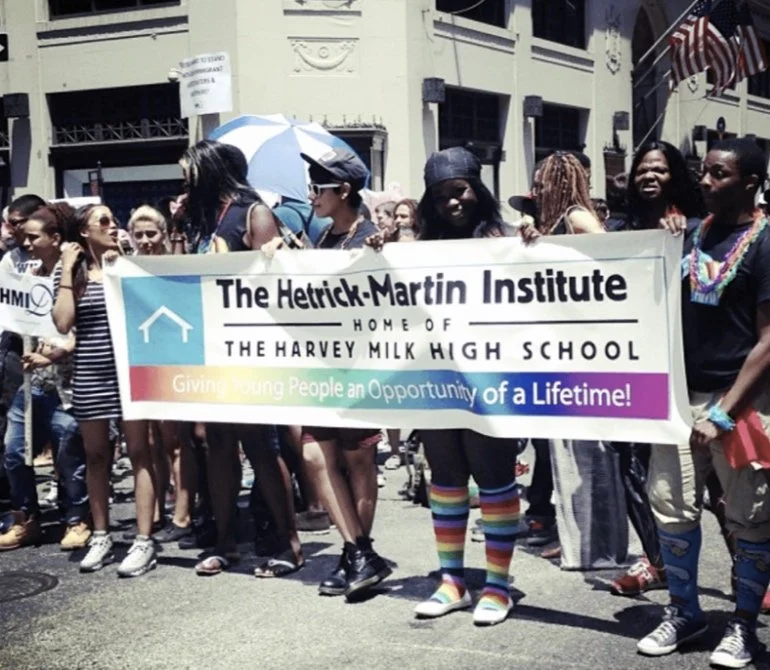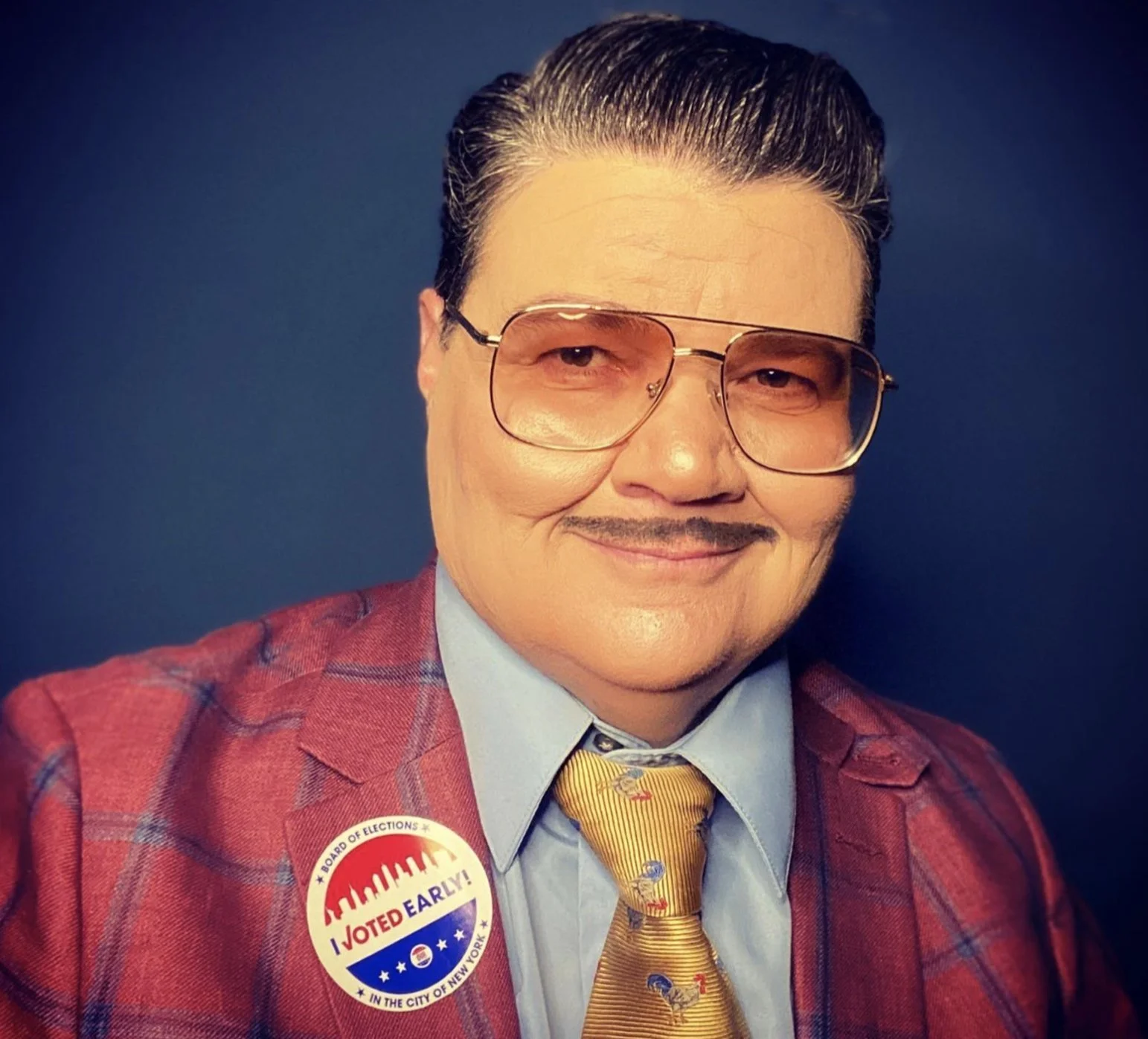NATION’S LARGEST SERVICE AGENCY FOR LGBTQIA+ YOUTH STARTED AT COUPLE’S MURRAY HILL HOME
In 1979, a Murray Hill couple — psychiatrist Dr. Emery Hetrick and New York University speech pathology professor Dr. Damien Martin — were heartbroken when they learned about a 15-year-old homeless boy who had been beaten and removed from his emergency shelter because the teen was gay.
Hetrick and Martin drew other concerned adults to the cause. In the living room of the partners' ninth-floor apartment at 144 East 36th Street (above yesterday) three blocks east of St. Vartan Park, Hetrick and Martin (below from left) created a charitable organization they dubbed the Institute for the Protection of Lesbian and Gay Youth (IPLGY).
Joyce Hunter, who helped Hetrick and Martin roll out IPLGY as its clinical supervisor of social work, recalled that the organization was blessed in its early days when "a special person" who requested anonymity came to the Murray Hill apartment.
The visitor "took $25,000 in cash out of his boot and placed it on their table," writes Hunter. "The next day he came back with another $25,000 in cash. With that $50,000, we were able to obtain a matching grant from the New York City Youth Bureau... We began to obtain the funding we needed to hire staff and obtain space for staff and professional volunteers to directly serve the young people."
In 1983, IPLGY moved from the apartment to an office on East 23rd Street near Lexington Avenue. Two years later in cooperation with the city's Department of Education, IPLGY created Harvey Milk High School with Hunter as co-founder.
Named for California's first openly gay elected official who had attended high school in New York City, the school was built "for gay youths, partly because violence inflicted on young homosexuals made it impossible for some to stay in other schools," Martin wrote in 1988.
Today, The Hetrick-Martin Institute remains the nation's largest service agency for LGBTQIA+ youth. The nonprofit is headquartered in the same East Village building as Harvey Milk High School.
Hetrick died in 1988 at age 56 and Martin in 1991 at age 57, each in Manhattan from AIDS-related complications. They are buried together at Brooklyn's Green-Wood Cemetery. Their gravestone proclaims, “Death ends a life, not a relationship."
COMMUNITY INSPIRED PRIDE MARCH HOST MURRAY HILL
On Sunday, ABC News and Hulu showcased Pride March events in New York and other cities with their live five-hour nationwide 'Pride Across America' broadcast co-hosted by entertainer Murray Hill (above). The telecast marked another recent star turn for the transgender performer, 51, who says that the Murray Hill neighborhood that includes St. Vartan Park is the inspiration for the stage name he's had for years.
Hill, host of Hulu's new reality competition show 'Drag Me to Dinner' and a cast member on the network's Amy Schumer dark-comedy series 'Life & Beth,' moved to the city after graduating from Boston University in the 1990s, to earn his MFA in photography from the School of Visual Arts on East 23rd Street. He would make a name for himself as a comedian and cabaret performer in the city.
After Hill aspired to a career in New York, the then-student was drawn to various Murray Hill references in the community. As a result, he says he changed his name to Murray Hill because it resonated with his persona. Indeed, Hill's 'Life & Beth' character is named Murray and his character on the FOX mockumentary sitcom 'Welcome to Flatch' is Murray Hillman.
"I don't know where they come up with these things!" Hill jokes.
WARHOL ADVANCED GAY ACCEPTANCE FROM 242 LEXINGTON
Andy Warhol blossomed as an artist in his 20s, when he lived and worked in Murray Hill within five blocks of St. Gabriel's (now St. Vartan) Park from 1953 to 1957.
This Pride Month, we recognize the advances Warhol (above) made for the gay community during his time at 242 Lexington Avenue near 34th Street. Warhol would openly identify as gay and report that his relationship with his "first boyfriend," photographer Edward Wallowitch, started during the Murray Hill days.
One of Warhol's biographers reports that the artist's 1956 'Studies for a Boy Book' and other work was "saying 'Gay is beautiful' a good dozen years or more before such a statement was acceptable."
Separately, Pulitzer Prize-winning New York Times art critic Holland Cotter describes Warhol in a 2002 piece as "the most important American artist of the second half of the 20th century" and "the first major postwar artist to put gay identity... at the very center of his work... before Stonewall and gay liberation, when to do so meant to be shunned by many of his artist colleagues, gay and straight. Warhol didn't care, or pretended not to, and just by being himself... he automatically became one of the important political artists of his time."
1970 MURRAY HILL EVENT ADVANCED GAY ADVOCACY
As Pride Month is celebrated with many happenings in the city, we recognize an event that happened more than a half century ago seven blocks southwest of St. Gabriel's (now St. Vartan) Park. The Murray Hill development appreciably advanced gay advocacy.
The ocassion was an hours-long sit-in on October 27, 1970, by about 50 members of the 10-month-old Gay Activists Alliance (GAA). The GAA's first president, Jim Owles (above, in GAA t-shirt, far right) was among the members who occupied the 18th-floor 2 Park Avenue offices of Harper's Magazine, in objection to the publication's September 1970 cover essay that GAA and others decried as homophobic.
News coverage of the event by local television stations and other outlets sparked a three-part WOR-TV series on gay liberation. The sit-in also inspired one-time Harper's editor Merle Miller to pen a now-landmark New York Times Magazine essay, 'What It Means to Be a Homosexual.' The long piece addresses the Harper's essay, the sit-in and GAA's Peter Fisher (above, in GAA t-shirt, far left).
Wrote Miller, "Fisher, a student at Columbia who helped organize the sit‐in, kept saying, 'What you don't understand is that there's been a revolution.' I'm not sure it's a full‐scale revolution yet, but there's been a revolt."
Harper's would reverse its position on the gay population.








